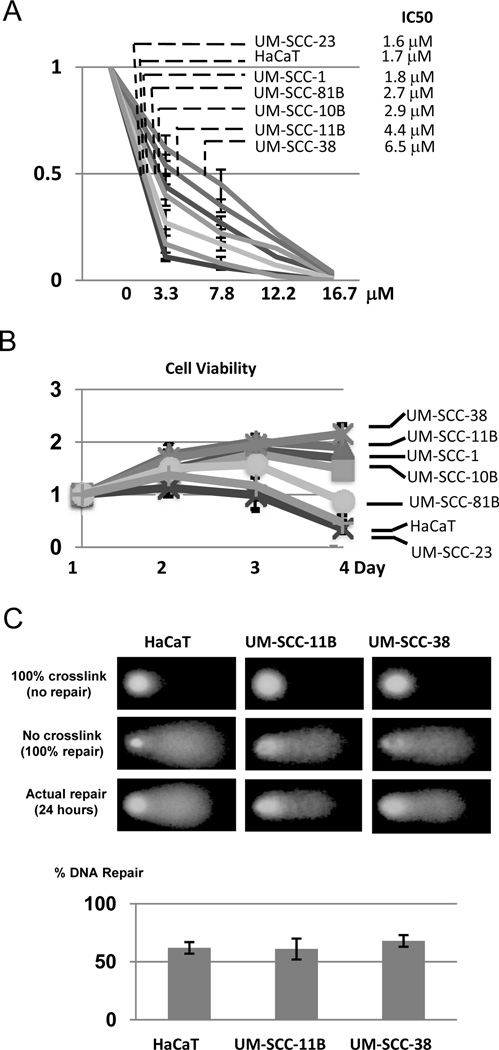Figure 2.
Cisplatin-resistance and DNA repair capacity in oral cancer cells. (A) SCC and HaCaT cells were incubated with cisplatin at various concentrations for 4 days. Cell viability was determined as described in Materials and Methods, and normalized to that without cisplatin treatment. The concentration of cisplatin that inhibits 50% cell growth (IC50) was calculated for each cell line. (B) SCC and HaCaT cells were incubated with cisplatin at 3.3 µM and incubated for 1–4 days. Cell viability was determined and normalized to that of the first day. (C) HaCaT, UM-SCC-11B, and UM-SCC-38 cells were treated with cisplatin (16.7 µM) for 2 hours to induce DNA crosslink and then incubated for 24 hours for repair. The DNA repair capacity in these cells was assessed using a modified comet assay as described in Materials and Methods. Representative images of the comet assay are shown. The graph is based on three independent experiments with at least 50 cells per sample in each experiment.

